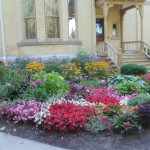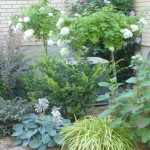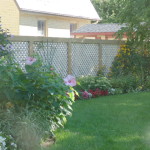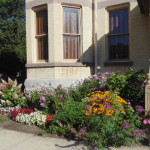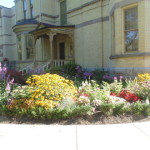Refreshing the Tired Garden
It’s Still Just Dirt – The Tillsonburg News, June 2014
by Penny Esseltine
Carlo Balistrieri is Head of Horticulture at the fabulous Royal Botanical Gardens in Burlington and who better to tell us about refreshing the tired garden then someone who is responsible for 250 acres of cultivated gardens offering amazing garden experiences.
Carlo says, “Looking fresh at a familiar place is one of the hardest challenges of gardening.” Gardens tire through the natural process of aging, from weather or cataclysmic events, and through neglect, which Carlo says is the most common reason.
Gardens should include three layers, Carlo says. These include a tree layer, a shrub layer (the middle layer in the garden that anchors trees to the ground), and a herbaceous layer (ground area perennials and annuals, also bulbs, vegetables, and fruit). “The herbaceous layer is what most people consider when refreshing the garden but don’t forget the trees and shrubs.”
Carlo has a couple of tricks for assessing your garden.
Trick #1: Squint as an exercise when looking at your garden. Details will disappear and you’ll see forms, shapes and texture.
Trick #2: Take pictures, but not always in colour. Colour is a distraction. It pulls your eye all over and you don’t see structure and design.
Start with the easy stuff.
- Clear beds out, rake, never leave corpses. Carlo says some plants just deserve to die. Sometimes this is the best chance for improvement or refreshment in the garden. “People may, he says, “over estimate the value of what they have.”
- Edge. According to Carlo this is the great forgotten art of gardening. “Sharp, deep, clear edge gives dramatic demarcation. Things are in their place.”
- Prune. A lot of people are afraid to prune. Follow the four Ds – take out the dead, diseased, damaged and dishevelled. “Lift the skirts of conifers (3 to 4 rows) so you can see amazing bark and new garden space.”
- Pop a little colour in your garden. Plant containers in the garden. Plant annuals in your perennial garden. “Bulbs are the best bang for your buck,” Carlo says
As you continue to think, plan and assess what to do to refresh your tired garden, Carlo offers these tips.
- Do familiar things in new and refreshing ways.
- Art in the garden is the lowest maintenance way to refresh a garden.
- Plant in new combinations.
- Plant to extend the season. Crocus for early season interest. At RBG they plant 200,000 crocus and it’s a spectacle.
- “Some things are sacrosanct,” Carlo says. “Don’t fool with outstanding trees, drifts of minor bulbs, or huge established clumps of ferns, ancient or otherwise.”
- Limit your plant palette. Pick winners with long seasons of interest.
- Limit the number of hardscape materials. These include paths, walls, fences, gates, garden art and ornaments.
- Simplify.
- Garden for your lifestyle.
- Create an identity or theme.
- At the end of the day, do one little extra thing to improve the place.
For additional information about the Royal Botanical Gardens visit rbg.ca and for information about the Tillsonburg Horticultural Society visit tillsonburghorticultural.ca.



















